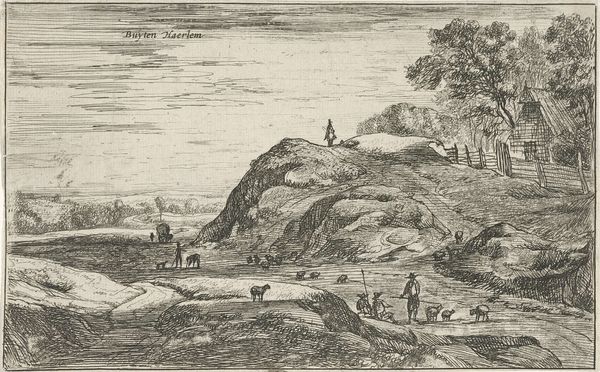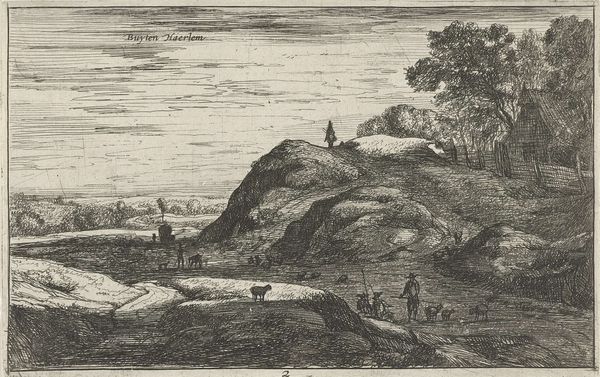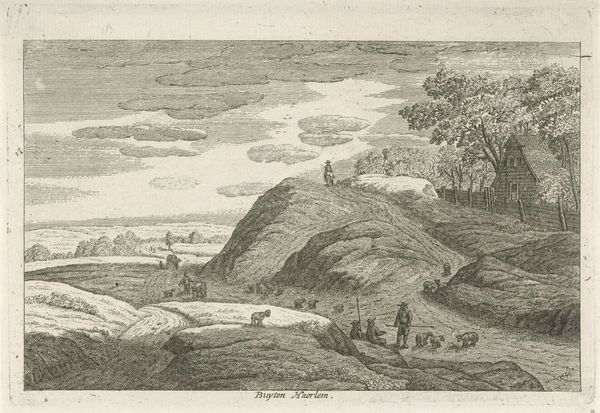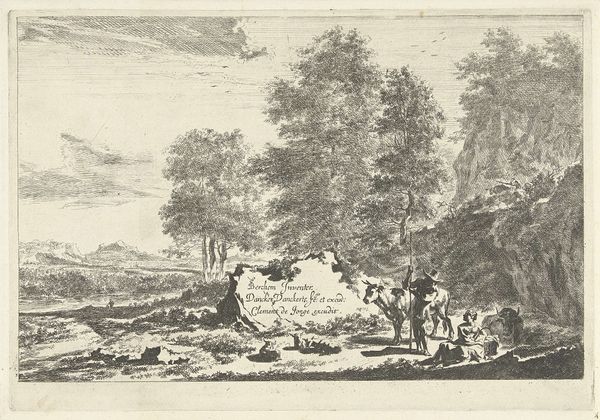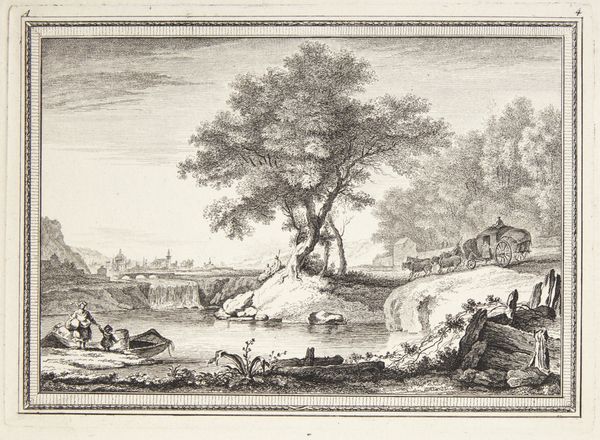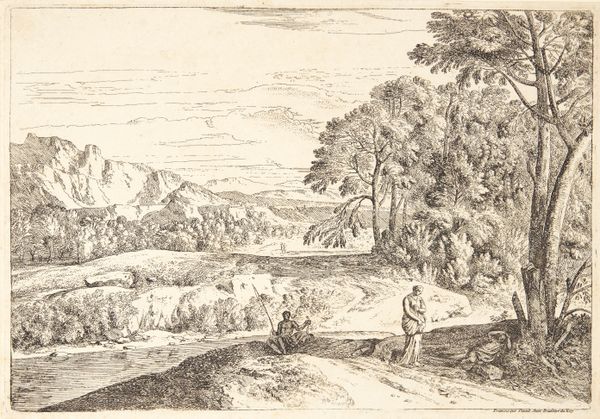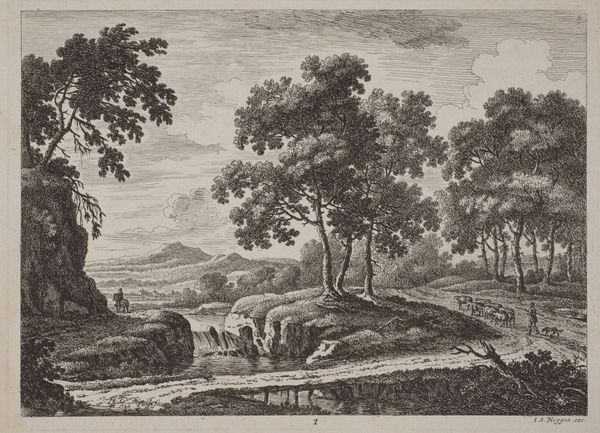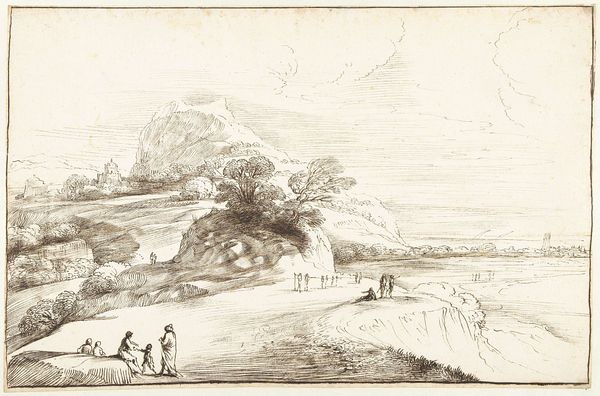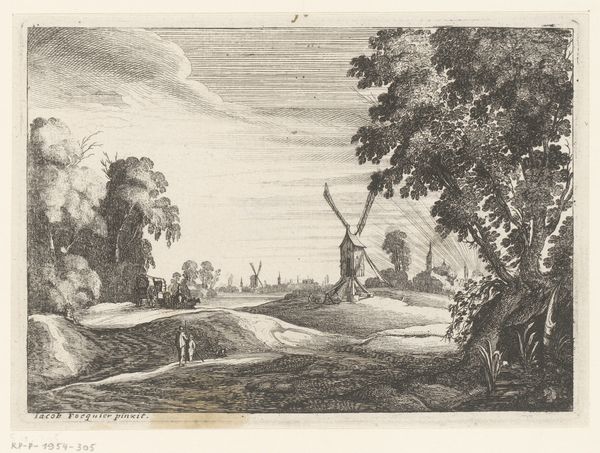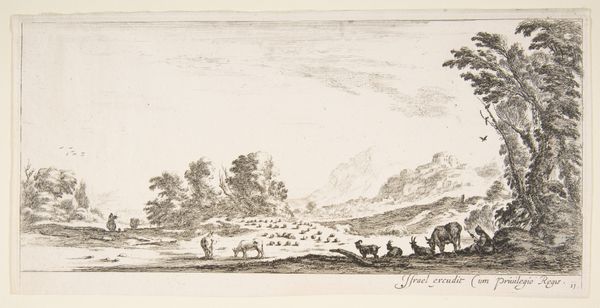
print, etching
#
dutch-golden-age
# print
#
etching
#
landscape
Dimensions: 125 mm (height) x 203 mm (width) (bladmaal)
Roelant Roghman etched this landscape outside Haarlem in the 17th century, capturing a scene marked by a distinct separation between the high and low. Consider the figure atop the hill, a lone silhouette reminiscent of Caspar David Friedrich’s wanderer. This motif, the individual against the vastness of nature, echoes through time, symbolizing introspection and the search for meaning. The hill, a recurring symbol across cultures, represents not only physical elevation, but also spiritual enlightenment. Yet, observe the everyday activities below - peasants with their animals. Here we have a juxtaposition between the grand, existential quest and the mundane aspects of daily life. This contrast invites us to reflect on the human condition, to acknowledge the duality of our existence. It is a tension that engages viewers on a deep, subconscious level, reminding us of our place within the larger tapestry of the cosmos. This dichotomy has been expressed in many forms across different eras, from religious symbolism to secular art. The non-linear progression of symbols, their resurfacing and evolving meanings, connect us to the collective memory, revealing the timeless nature of human experience.
Comments
No comments
Be the first to comment and join the conversation on the ultimate creative platform.
